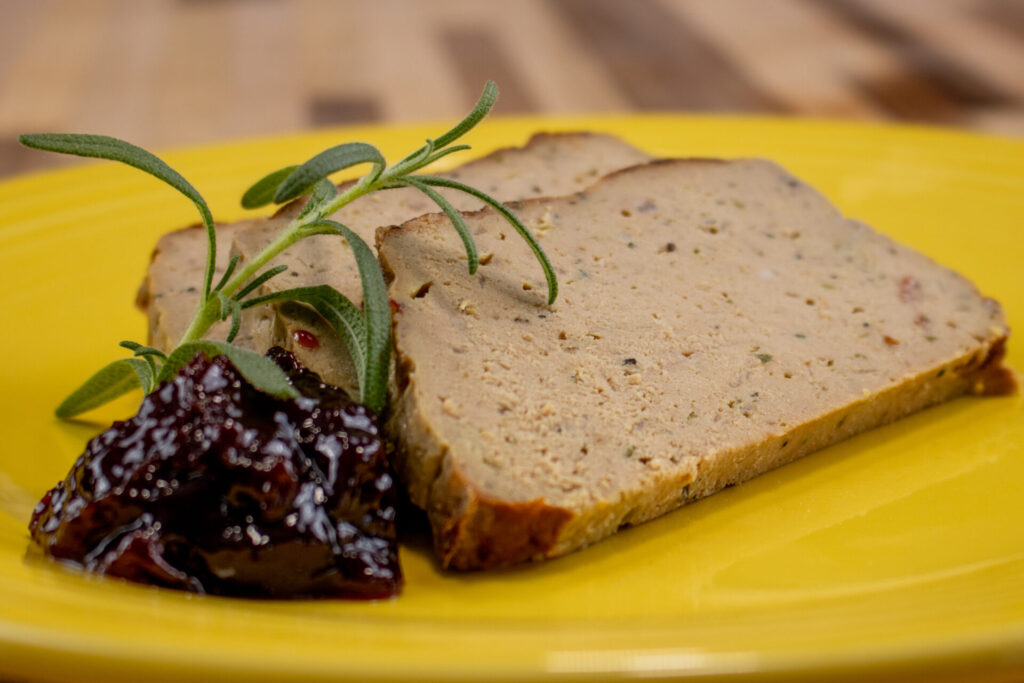Ah, pâté. The word itself conjures up images of charming Parisian bistros, crusty baguettes, and a certain je ne sais quoi that whispers of culinary sophistication. But fear not, fellow food enthusiasts! This seemingly intimidating delicacy is far more accessible than you might think. Today, we embark on a culinary adventure to demystify the pâté and equip you with the skills to create your own masterpiece.
Our journey begins in 18th century France, where this genius invention first graced tables and delighted palates. Pâté, in its essence, is a rich and flavorful mixture of meat, typically ground, and often incorporating luxurious ingredients like liver and spices. It’s then baked into a smooth, spreadable concoction that’s perfect for enjoying with crusty bread or crackers.
This particular recipe, however, is not your stuffy, old-world pâté. It’s a vibrant, fresh take, designed for the modern cook who craves both flavor and simplicity. Think of it as your gateway to pâté perfection, a recipe that will have you feeling like a true culinary artist without the fuss and fanfare of complicated techniques.
The Star of the Show: Chicken Livers (But Don’t Worry, There’s Pork Too!)
Now, I know what you might be thinking: “Liver? In my pâté?” But trust me on this one. Chicken livers, with their delicate flavor and smooth texture, add a depth and complexity that elevates this pâté to new heights. They play a supporting role to the main act – the hearty and flavorful ground pork sausage. The combination is pure magic, a harmonious blend of richness and subtle nuances that will have you going back for seconds (and thirds!).
The Secret Weapon: A Silicone Mold
Before we dive into the recipe, let’s talk tools. While a traditional pâté mold certainly has its charm, I’m a big fan of using a silicone mold. Not only does it make the unmolding process a breeze, but it also offers excellent heat distribution for even cooking. Plus, let’s be honest, silicone molds are just plain fun to work with!
Ready to Get Cooking? Let’s Go!
Step 1: The Aromatic Foundation
We begin by building a flavor base that will make your taste buds sing. Finely chopped onions are gently sautéed in your favorite frying oil until they turn a beautiful golden brown and become irresistibly sweet. This caramelized onion base adds a touch of sweetness that perfectly complements the richness of the pâté.
Step 2: Liver Love
Next, we turn our attention to the chicken livers. A quick rinse under cold water ensures they’re clean and ready for their transformation. Then, it’s into the food processor they go, along with the star of the show – the ground pork sausage. We also add aromatic rosemary, pungent garlic, creamy heavy cream, melted butter (oh, the richness!), and a touch of salt and pepper for good measure. A whirl in the food processor transforms this medley of ingredients into a smooth and luscious batter.
Step 3: Baking and Patience
With the batter ready, it’s time to bake our creation. The oven, preheated to a gentle 330°F, will work its magic, transforming the batter into a beautifully set pâté. This is where patience comes into play. Allow the pâté to cool completely in the mold, first at room temperature and then in the refrigerator. This gradual cooling process ensures a perfectly textured pâté that slices like a dream.
Step 4: The Grand Unveiling
Once chilled, it’s time to unmold your masterpiece. Thanks to our trusty silicone mold, this step is a breeze. Gently remove the pâté, revealing its smooth, velvety surface. Slice it into generous portions and prepare to be amazed.
Step 5: Serving with Style
The beauty of pâté lies in its versatility. Serve it on crusty bread, alongside a simple salad, or get creative with elegant canapés. A dollop of cranberry sauce adds a touch of sweetness and acidity that cuts through the richness of the pâté.
The Final Word
There you have it – a journey into the world of pâté that’s both approachable and delicious. This recipe is your passport to culinary confidence, proving that even seemingly complex dishes can be conquered with simple techniques and quality ingredients. So go forth, embrace your inner chef, and create a pâté that will impress your friends and family (and maybe even yourself!).
Read less





Share
Click on the icons below to share "Title of the item to share"